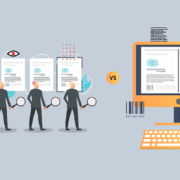A Deep Dive into Enterprise Pharma’s Content Efficiency Problem
Date: August, 2022 | Category: Quality | Author: Hana Trokic
Highly Regulated Products and Services
By definition, pharmaceutical regulations are the combinations of legal, administrative, and technical measures that governments take to ensure the safety, efficacy, and quality of medicines, as well as the relevance and accuracy of product information.
Regardless of the quality control agency, organization, or administration, there is a constant among them all; their main task is to ensure the utmost quality, safety, and efficacy of the drugs that make it to market, along with the accuracy of their product information.
With enterprise pharma being one of the most highly regulated and monitored global industries, this is no simple task. The risks are far too high as the consequence of pharmaceutical errors can lead to large recalls or worst-case scenarios such as potential life loss. They can also lead to a negative brand image and reputation, which is particularly harmful to pharma companies that rely on customer loyalty as a central selling point of their highly specialized products.
Practices and workflows must also be extremely efficient with the slightest possibility of error. The seemingly simple mistake of a typo, an added or removed letter, number, or hyphen can have catastrophic consequences not just for the company but for consumers as well. Ultimately, drug regulations mainly focus on ensuring product safety, but who guarantees the quality and accuracy of the content and artwork?
Enterprise Pharma’s Content Efficiency Problem
In such a highly regulated industry, it would be assumed that efficient and streamlined workflows are already in place to ensure that the content behind every product is accurate and error-free. Unfortunately, that’s not always the case.
Errors in pharmaceutical packaging, labeling, and product descriptions are still regular occurrences that cause detrimental consequences, from consumers’ well-being to the integrity of the products and company. In fact, it’s estimated that 50 percent of all pharmaceutical recalls are related to errors in labeling or packing artwork.
What’s more, they are much more frequent than one would imagine, as clinically important drug recalls occur approximately once per month in the United States. For perspective on just how significant these financial impacts can be, Johnson and Johnson lost roughly $600 million in sales after closing a distribution site due to a recall. Another infamous recall occurred in 2012 when Pfizer recalled approximately 1 million packs of birth control pills due to incorrect packaging.
Overall, the noted top recall causes in pharma are due to incorrect labeling, defective products, and incorrect potency. Common mistakes in packaging and labeling are necessary information missing from artwork, content errors, and technical errors such as flawed barcodes, while these errors in documentation, print, and packaging can result in a multitude of problems.
To avoid recalls caused by content errors, companies must inspect the artwork at every step of production, ensuring the accuracy of the text, labels, design, braille content, and barcodes. Innovations in automation now allow pharmaceutical companies to implement all-in-one quality control platforms that check text, spelling, artwork, graphics, braille, and barcodes at every stage of production.
Automation as a Solution
Bringing a pharmaceutical product to market is one of the most complex and highly sophisticated processes in business globally. However, one major piece is broken – the documentation proofreading process.
Many large global corporations have yet to implement efficient and effective workflows that allow them to proofread content in record time with complete accuracy. They still heavily rely on manual and labor-intensive proofreading processes that are prone to costly mistakes. Taking hours, days, or even weeks to check a single document is not a probable solution for large corporations producing and distributing millions, if not billions, of products daily. These inefficiencies in workflows allow for the massive potential for these processes to be optimized and streamlined.
The solution, thankfully, is simple, and it lies in using automated quality control to look over all content and artwork with complete ease, at lightning speed, and with increased productivity and accuracy.
To keep up with increasing global consumer demands, pharmaceutical companies are creating almost immeasurable amounts of products, each with its own packaging, labeling, and written instructions. All of this content needs to be meticulously overlooked, carefully checked and proofread to ensure that the final product is entirely error-free. Manually proofreading these neverending amounts of content is simply not an efficient solution for organizations that must keep up with growing demands.
Automated proofreading software offers a foolproof solution to ensure all this generated content is checked and proofread to perfection. This advancement in proofreading processes eliminates the need for manual document inspections and leaves it up to technology. The software conducts digital checks looking for discrepancies in text, spelling, graphics, color, and more. While this could be done manually, the software finishes proofreading processes in a fraction of the time and ensures that your work is 100% accurate before going to print, avoiding the need for multiple inspections downstream.
Automation ultimately increases productivity and workflow efficiency and offers endless benefits unmatched by manual inspections. Not only does automated proofreading software help ease the proofreading process, it simply makes proofreading better, optimizing workflow processes and allowing for the completion of proofreading tasks with complete and utter ease.
Try it Out for Yourself
While traditionally, manual inspections were the only method used to proofread content, modern-day technology has allowed for faster and more efficient solutions to get the job done right. With endless benefits and countless advantages to any enterprise pharma team’s workflow, automated quality control is the leading solution for pharmaceutical companies that deal with sensitive and highly regulated documentation in an extremely high-risk industry.
Don’t let your organization fall behind by using outdated methods. Make the switch today and turn to modern, innovative solutions to keep your workflows efficient, accurate, and error-free. Start reaping all the benefits of GlobalVision’s automated solutions and solve your content efficiency problems today.
Related Resources:
- Solving The Content Efficiency Problem in the Pharma Industry
- Your Complete Guide to Meeting FDA Labeling Requirements
Ensure your content is always error-free in record time with GlobalVision. Try it now for free.
Keep up with the latest updates in automated proofreading software. Sign up for our newsletter.









